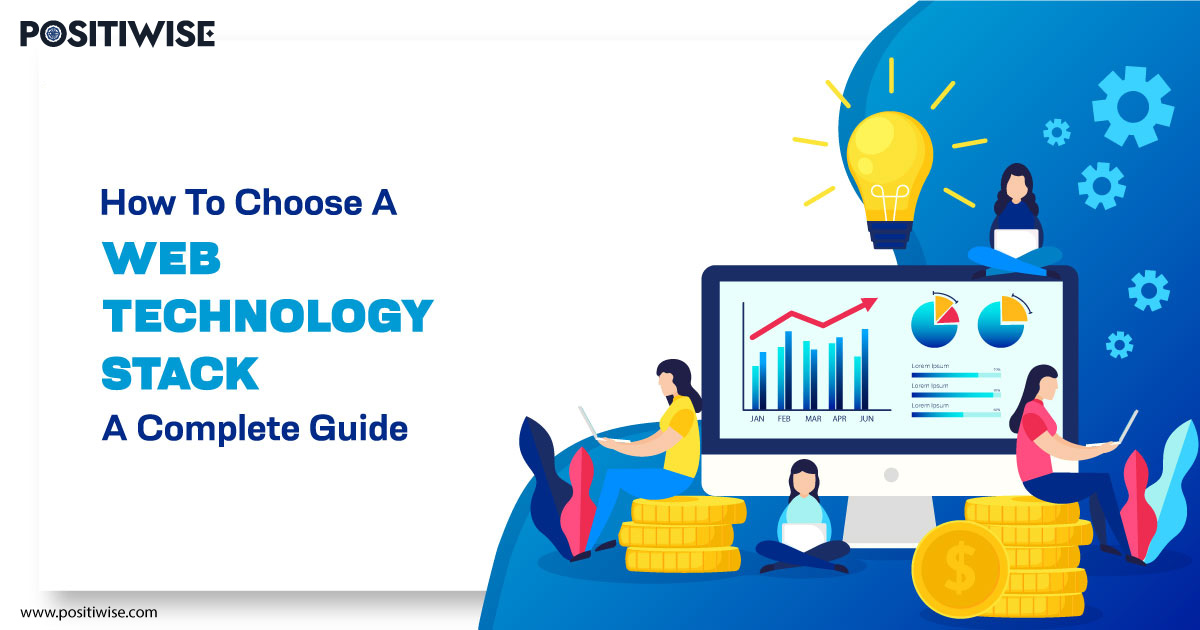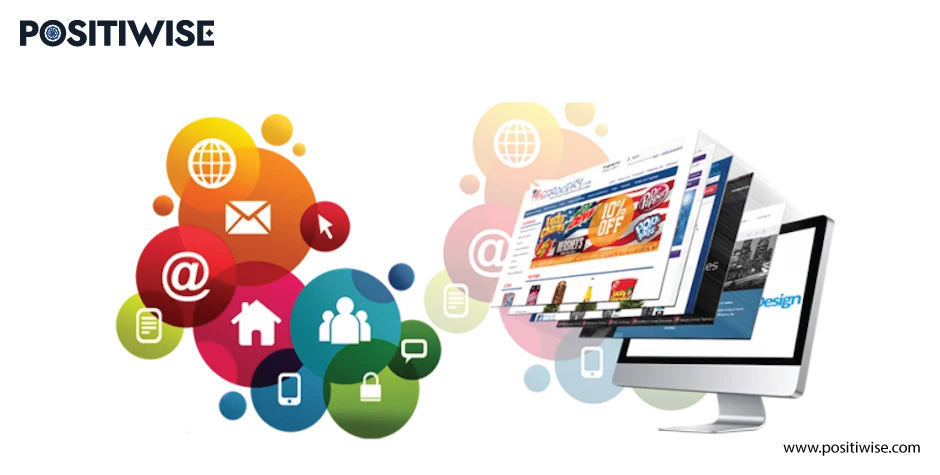Quick Overview:
Every company has its way of approaching web development, and every team is different. But some commonalities can help you to understand how each technology works and what it can do for your project. The right technology stack is the foundation of any successful business. It’s a critical part of the product design process and dictates how you approach building your website.
A good web technology stack should offer performance, security, and ease of use that meets your customers’ needs. A bad one can make your site slow or cause security breaches.
What is Web Technology Stack?
A web technology stack is the collection of software components used to build websites. The web technology stack is a combination of several different programming languages that can be used to write software for the web. It’s important to note that each language on the stack has its responsibilities.
For example, JavaScript handles page layout and interactivity, while Python handles data processing tasks like filtering and sorting. It consists of components such as HTML, CSS, JavaScript, and others. These components work together to create an interactive experience for users. Developers design web technologies to be modular, making it easier to develop different types of websites using a single toolkit.
Structure of Technology Stack Development
This stack consists of backend technologies, Front-end technologies, and the frameworks that use them:
Front End
The Front-end is the part of the technology stack that takes care of the user interface. The most important part of this front end is the user experience and how users interact with your website. You want to ensure that users can find what they need so they don’t get frustrated or bored. This can include anything from a site’s homepage to an application’s login page. The front end generally consists of HTML, CSS, JavaScript, and other assets that browsers and other applications require. Front-end developers will usually be responsible for designing, writing, and testing all user interface elements that make up your website.
Back End
The back end happens when a user visits a website or opens an application. All the magic takes place behind the scenes; it’s where all your content is stored, processed, and presented to users through different means (displayed on different devices). Backend technologies include databases, servers, web applications, and other tools that enable you to store and manipulate data to present it to users in a way they can understand.
How to Choose the Right Stack
Here are some basics for choosing the right stack:
Type of The Project
The first thing to consider when choosing a stack is the type of project you are building. You should first look at if your stack can handle the task you have in mind. The project type largely depends on your requirements and the type of application you want to build. For example, if you’re building a marketplace and want your users to interact with each other, you will need to choose an appropriate backend stack. To develop a social networking platform, you must choose a front-end stack.
Knowledge
The knowledge required to use a particular stack varies from person to person. If you’re working with a team of developers, they will know the best practices and tools needed for the job. But starting as an independent developer, you might not know how to use specific tools or what problems they solve.
This is another factor that determines which stack is best for your application. For example, suppose you’re developing an e-commerce website. In that case, you need to consider using Ruby on Rails or Node.js, as they both have the necessary features and support for building complex applications. If you have expertise in one language and not the other, then it might be worth learning to use their respective frameworks when building your next project.
Development Cost
The cost of the stack is an essential factor to consider when choosing a stack for your project. You want to make sure you can afford to use the stack you want and benefit from it. It’s also essential that your team can afford the costs of developing on top of your stack. The cost of a stack is not the only consideration. It would be best to consider the full-stack app development and maintenance costs. For example, if you choose an analytics platform as your data layer, you’ll need someone who can write code for this platform and manage all of your application’s data.
Flexibility
Another important consideration when choosing a stack is how flexible it is. Does it offer features that allow for expansion or customization? Is there a strong community around the platform? Does it have good documentation available? These are all factors that help determine whether or not a particular platform will be able to grow with your company over time.
Security
Security is another critical factor when choosing a stack. Knowing your chosen stack’s security measures is essential to ensure that your data isn’t vulnerable. The more secure your data, the more critical this feature becomes. Several types of security features can be included in your stacks, such as encryption and authentication services. These features ensure that only authorized users can access sensitive information and prevent unauthorized users from seeing or modifying your data.
Best Stack for Web Development
Mean Stack
This stack uses ExpressJS and MongoDB to build web applications faster than ever. It’s a very flexible stack that allows developers to focus on building their apps without worrying about the underlying technologies underneath them. That being said, it also means that developers need to be comfortable with JavaScript and NodeJS before they can use this stack effectively. The mean stack works well for small projects with limited data or complexity, but it’s not suitable for large applications or complex business logic where performance matters.
ReactJS
React is probably one of the most popular front-end JavaScript frameworks out there because it brings so much value to users while letting developers focus on creating an engaging experience for their users. This makes it a perfect fit for building web applications because it offers many different benefits, not just in terms of user interaction but also in terms of performance and scalability. React is an open-source JavaScript library for building user interfaces. It lets you build dynamic web applications that are composable and reusable. With React development, you focus on the view layer and write less code to create your application’s user interface. The framework handles the rest, allowing you to write plain JavaScript that’s efficient, flexible, and easy to test.
NodeJS
NodeJS is an open-source platform built on Chrome’s JavaScript runtime for quickly building fast, scalable network applications. NodeJS development has built-in modules that make it easy to store data locally or in the cloud, run low-latency server applications with a single process/thread, and compose microservice applications by running multiple independently developed services together.
Recommended: Node JS vs React JS – The Difference
Let Our Experts Build the Web App You Need
Struggling to find an off-the-shelf solution that fits your needs? Our experienced web developers create custom apps designed specifically for your business goals. Leverage our expertise to get the precise web app you want.
Conclusion
The best web development stack is the one you can build on top of. This is the most flexible and allows you to build a web application that can take advantage of any technology. There are many different ways to build a web stack, and each has its pros and cons. Web technology stacks are becoming more complex, with more and more software developers using them. This is not only because of the demand for developers but also because of the increased complexity of development needs. It’s essential to understand which web technologies you should use for your project.
Expert in Marketing Strategy and Brand Recognition
Jemin Desai is Chief Marketing Officer at Positiwise Software Pvt Ltd, he is responsible for creating and accelerating the company’s marketing strategy and brand recognition across the globe. He has more than 20 years of experience in senior marketing roles at the Inc. 5000 Fastest-Growing Private Companies.






